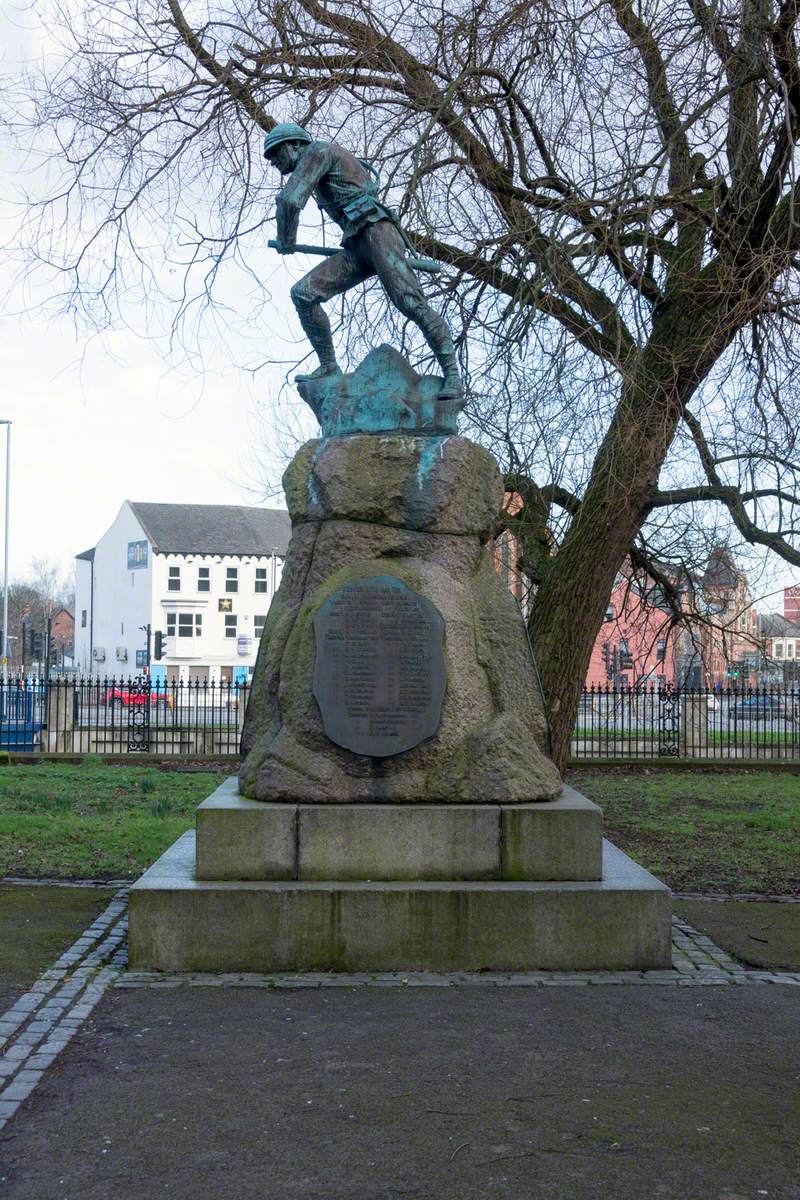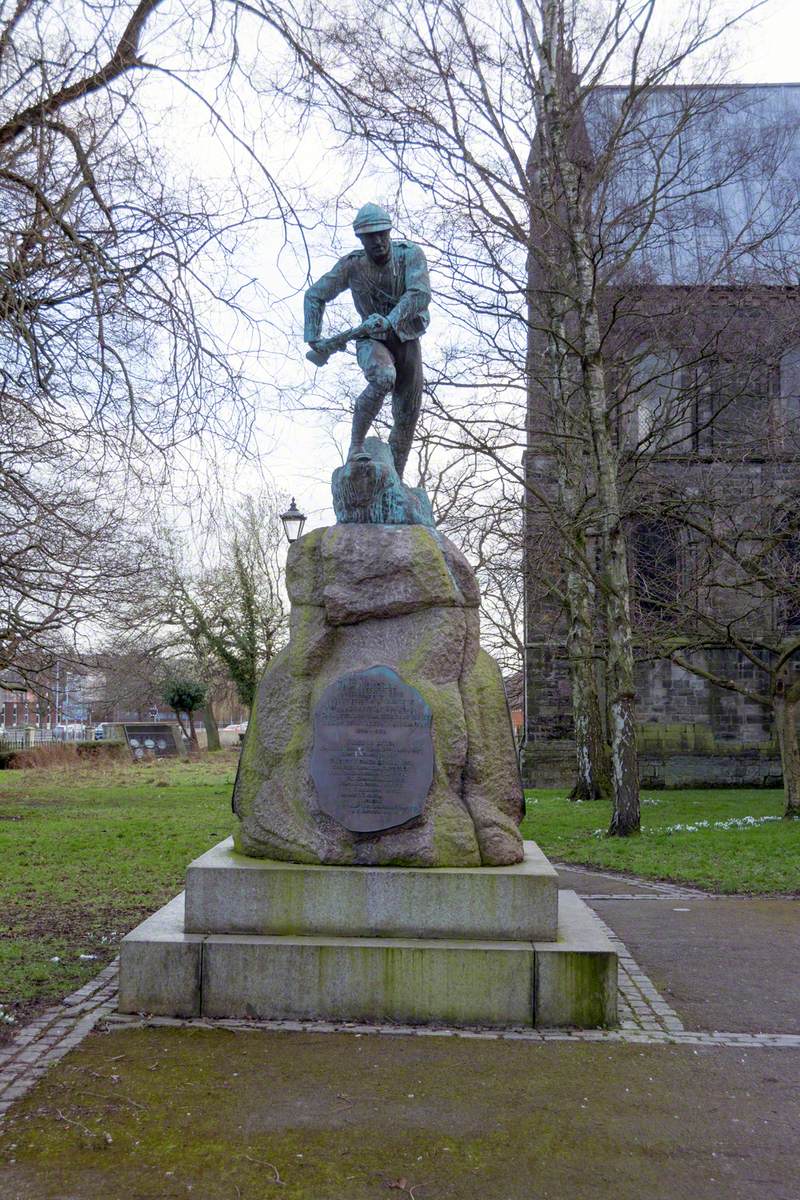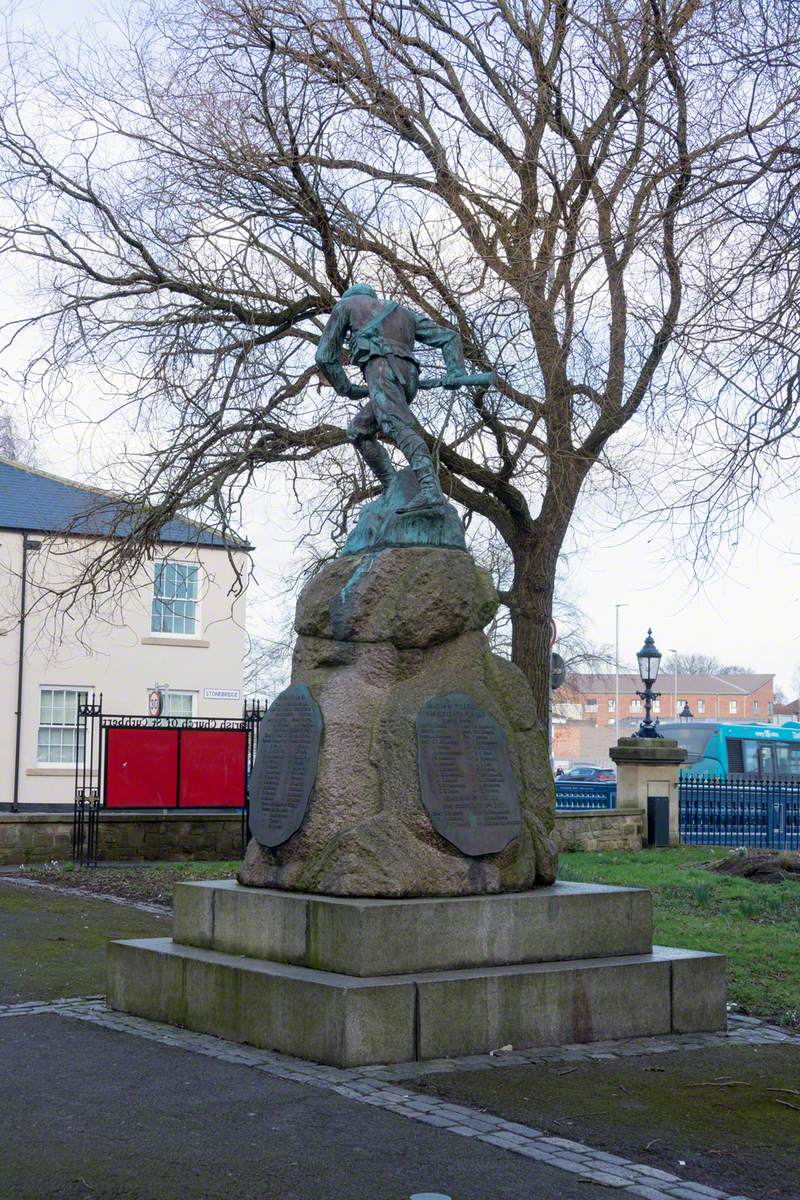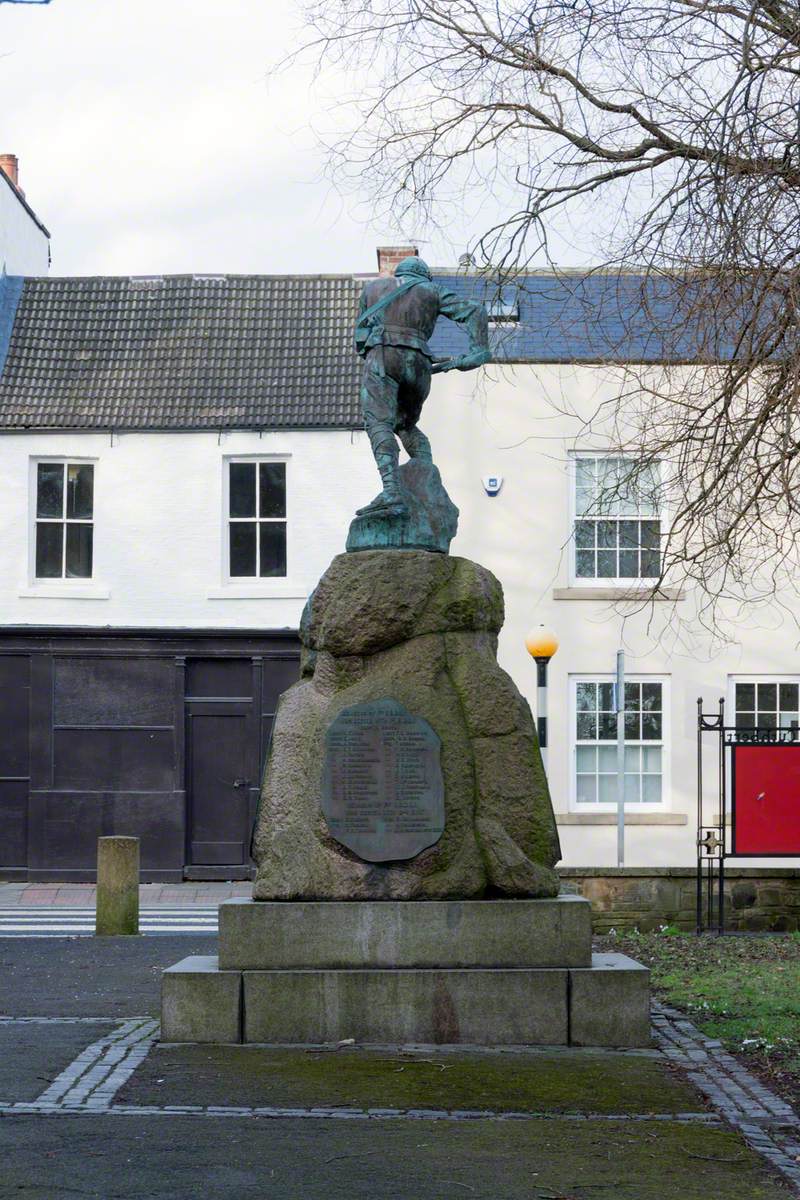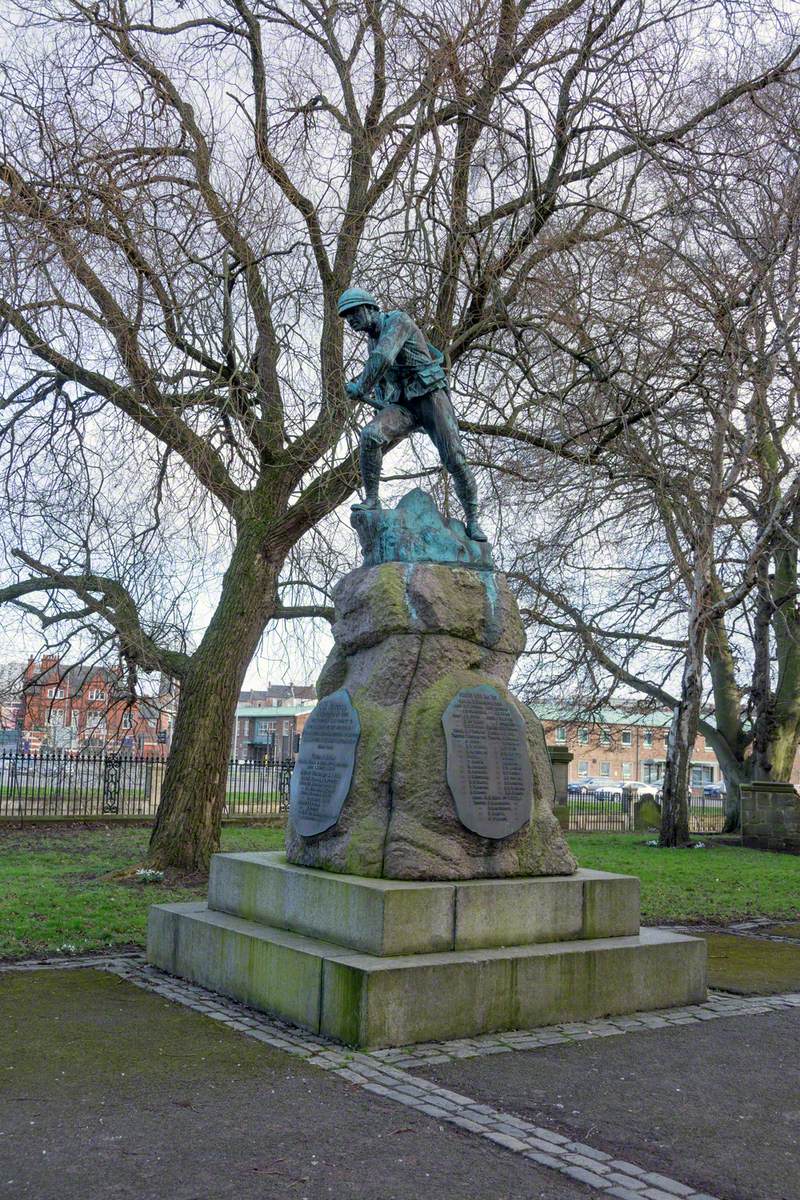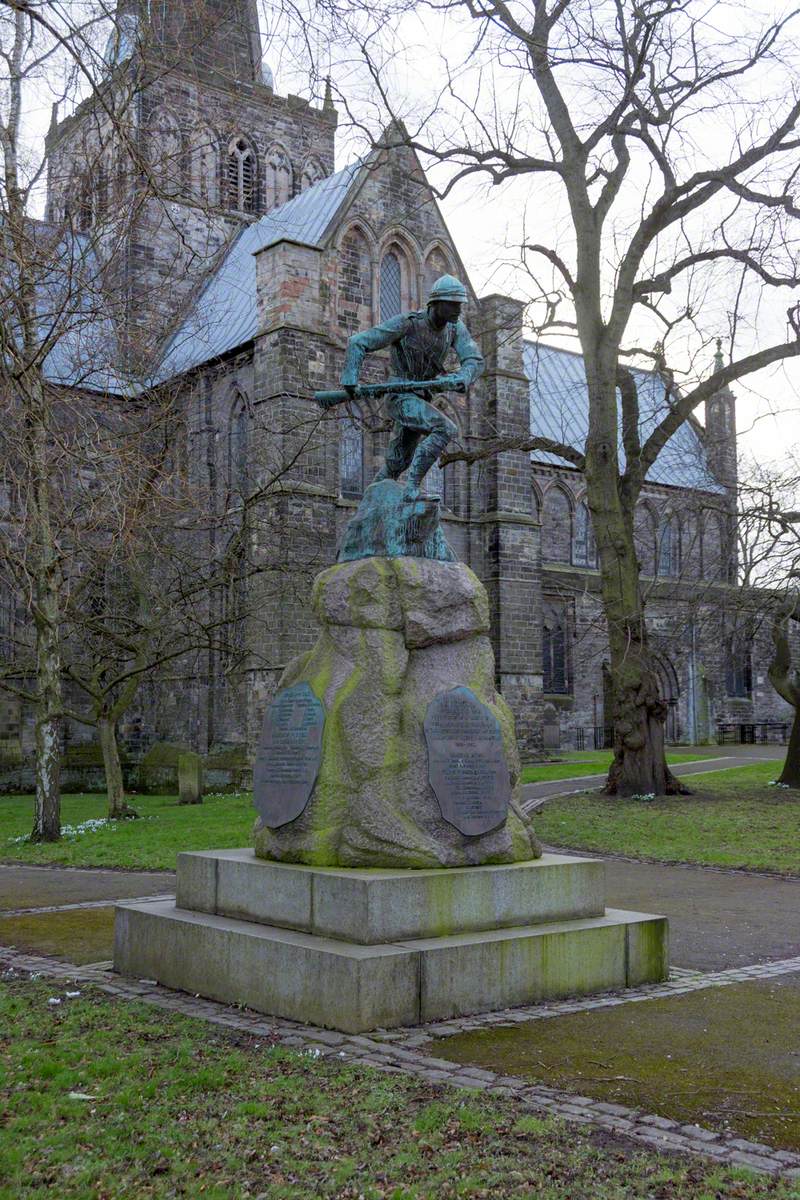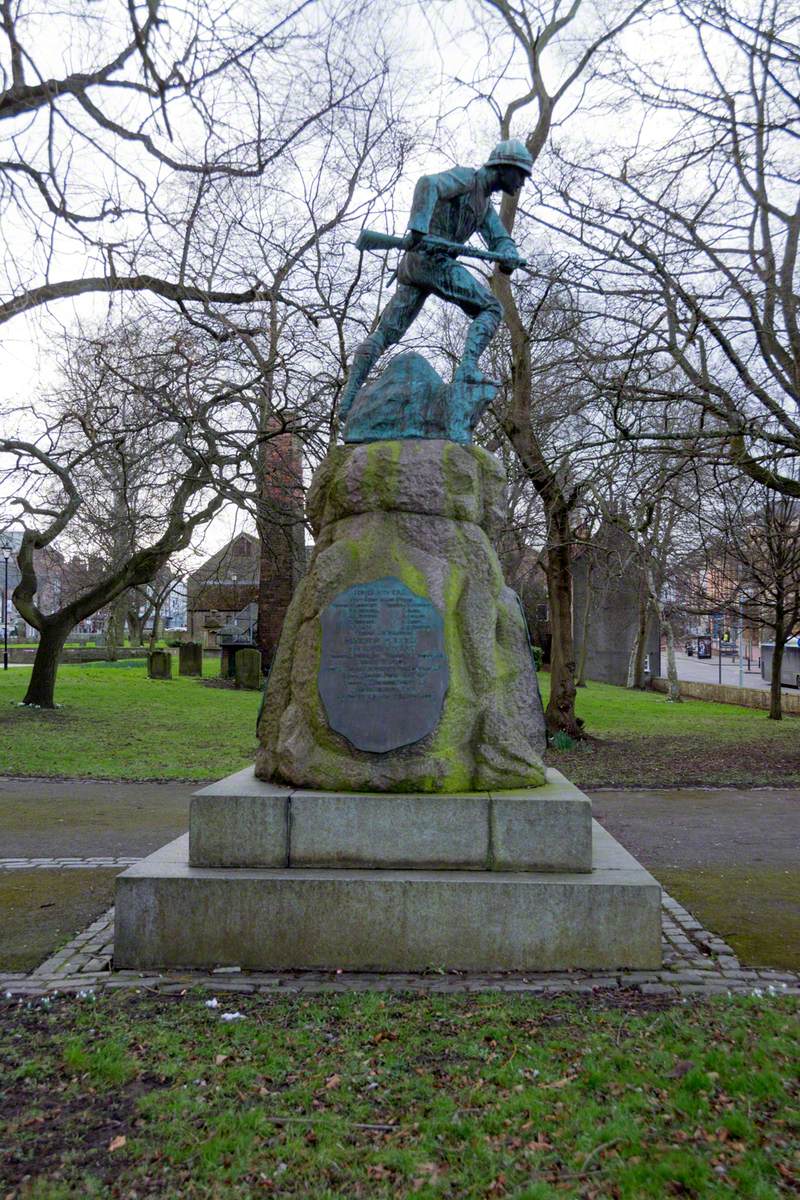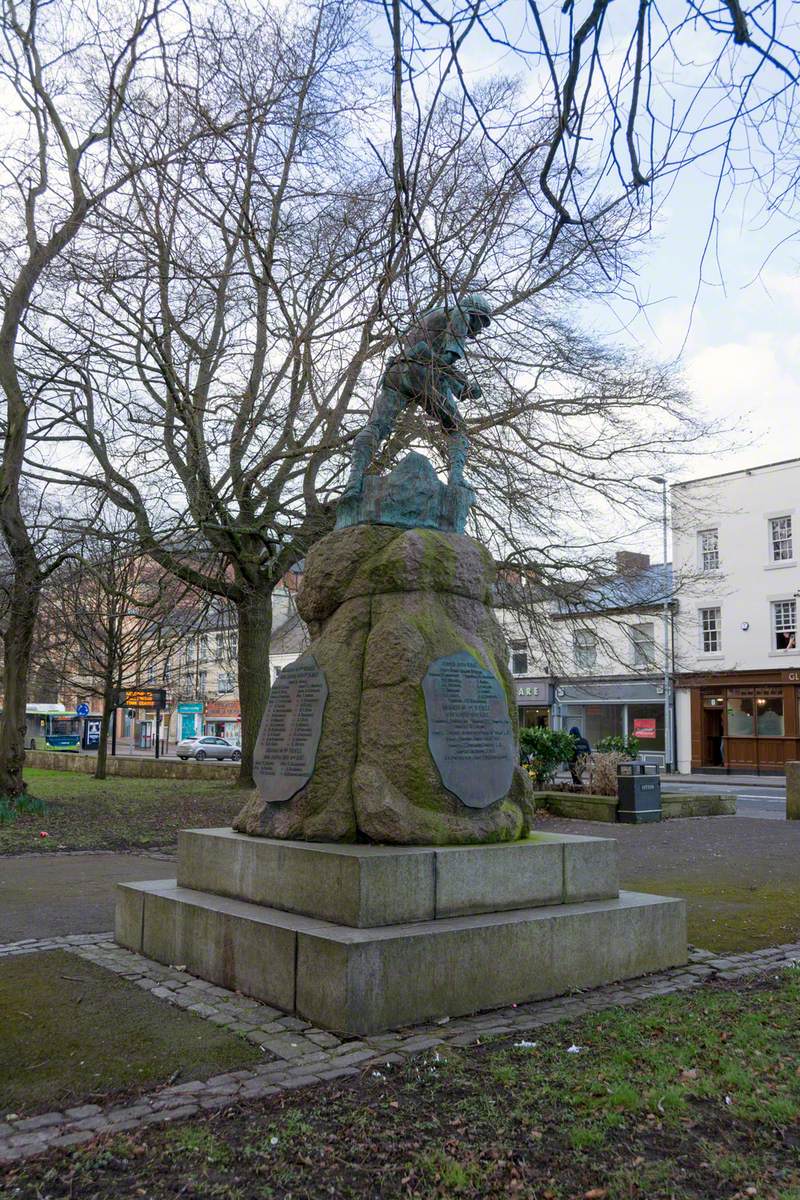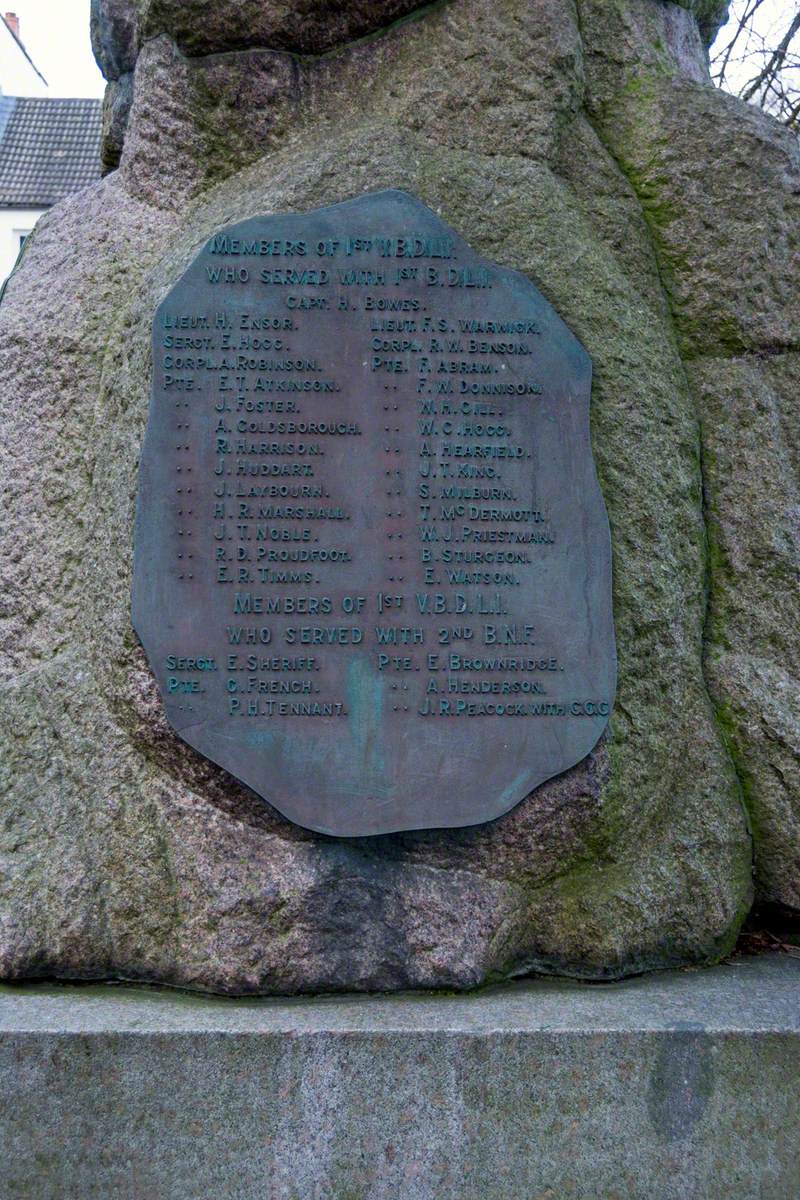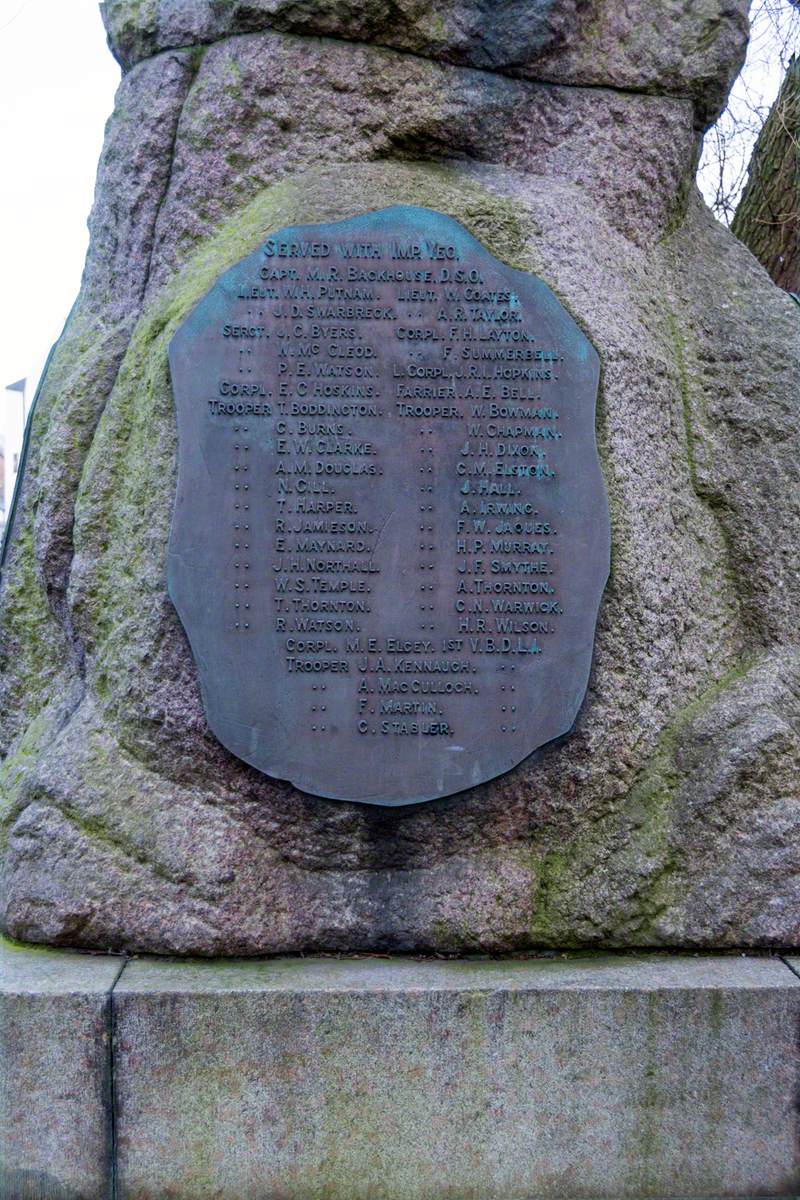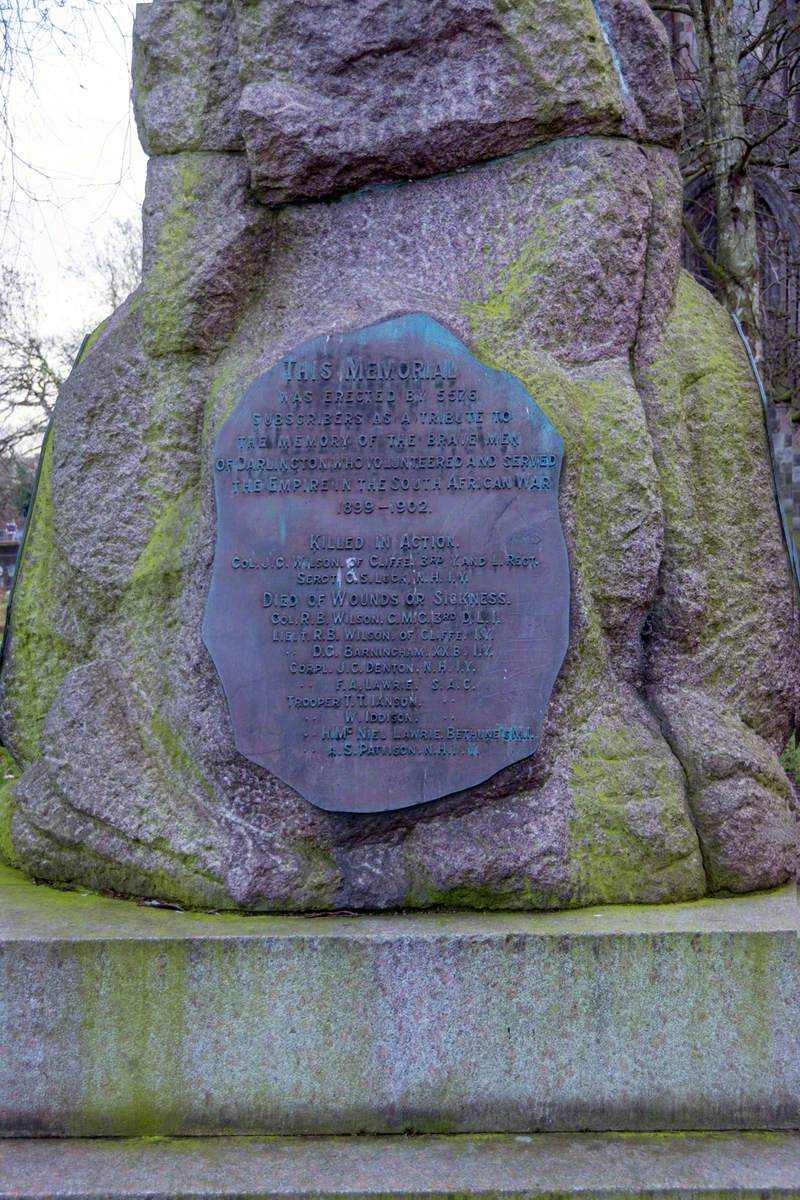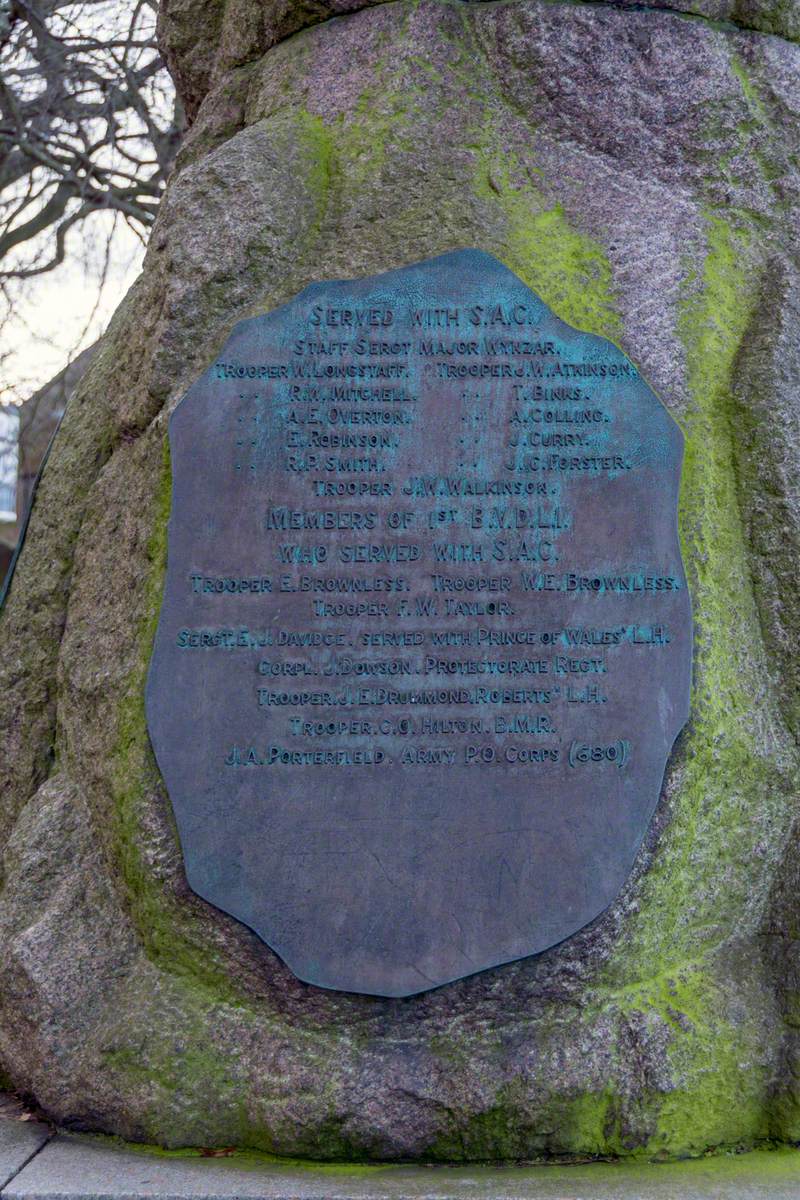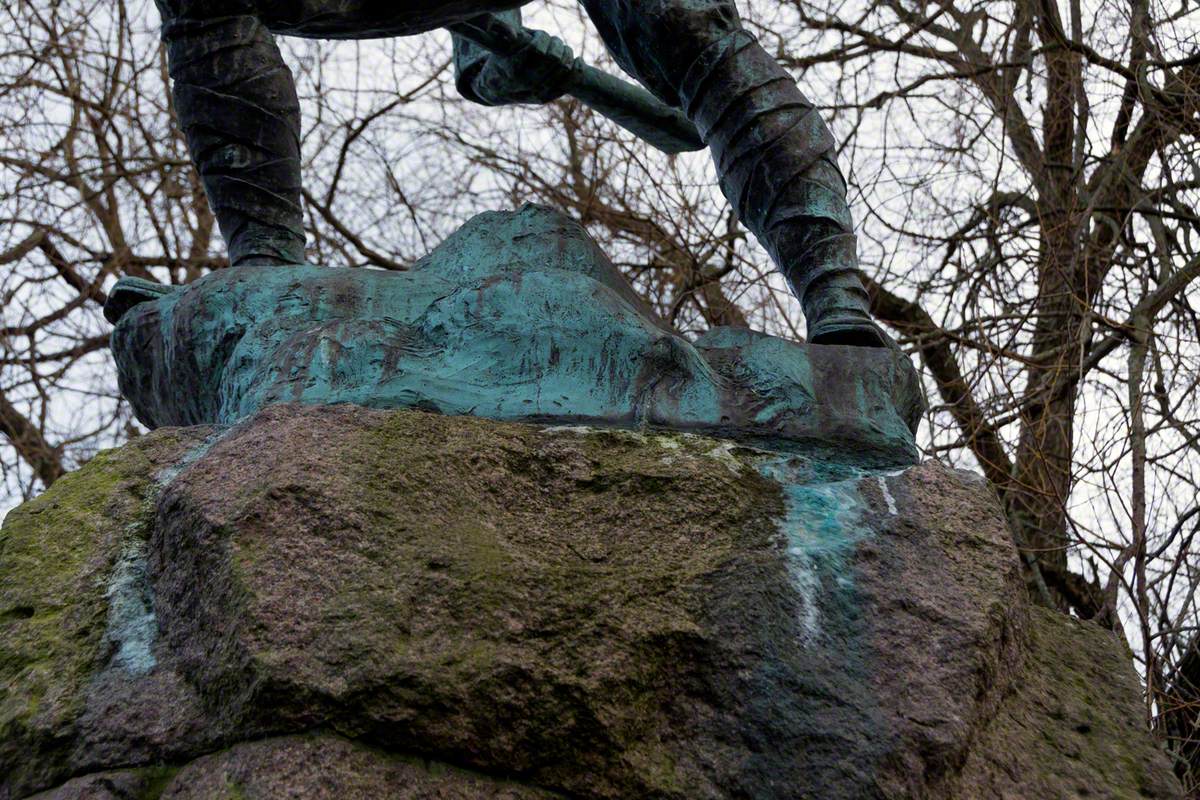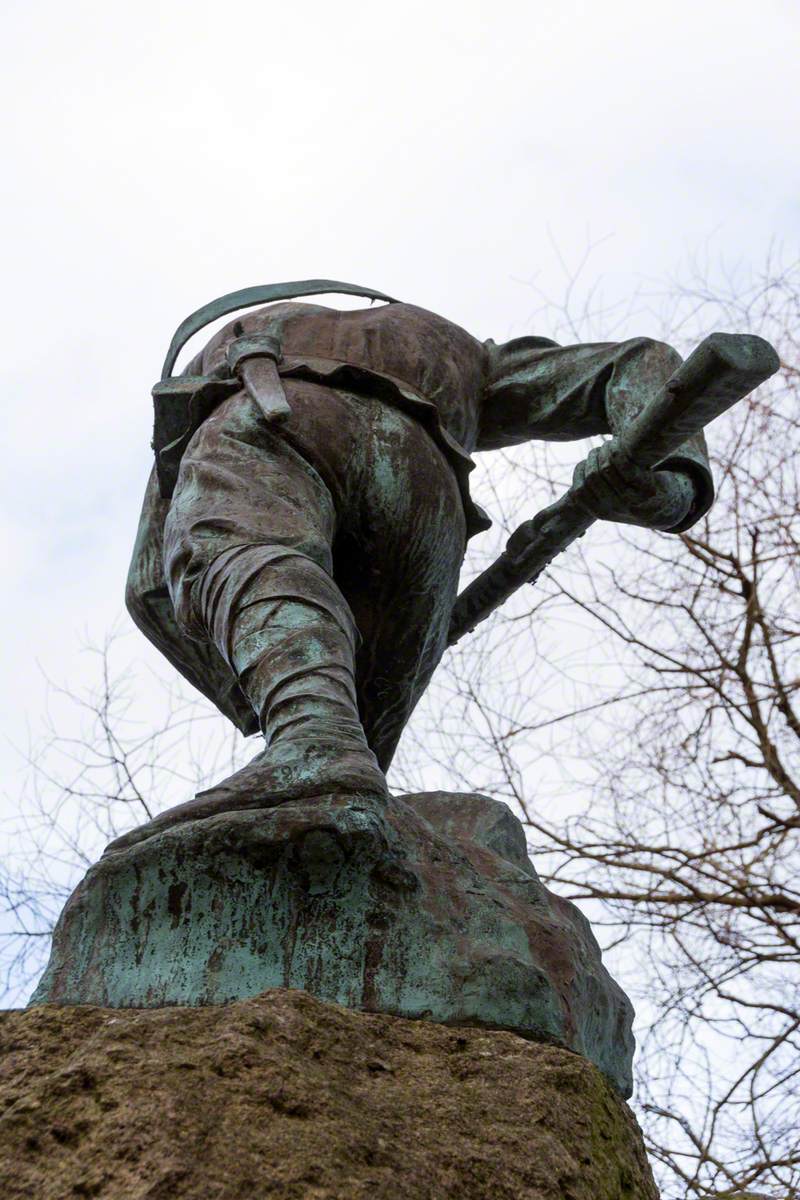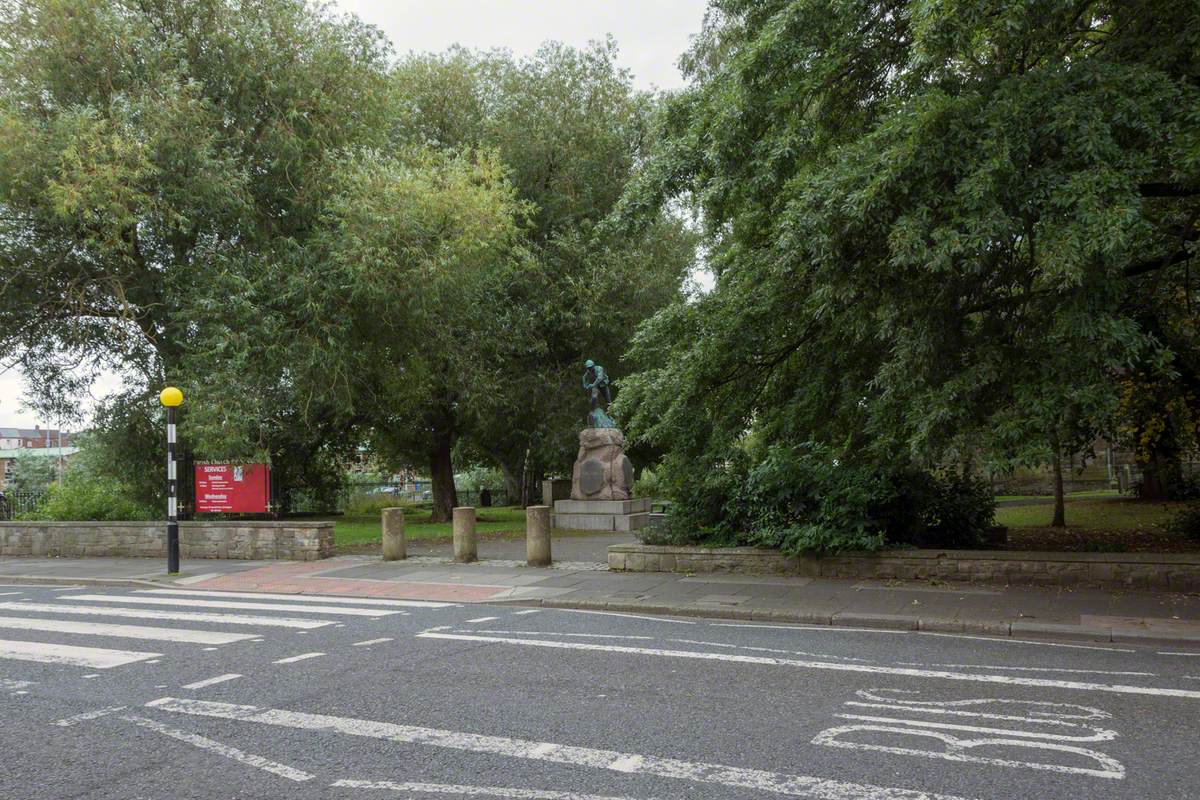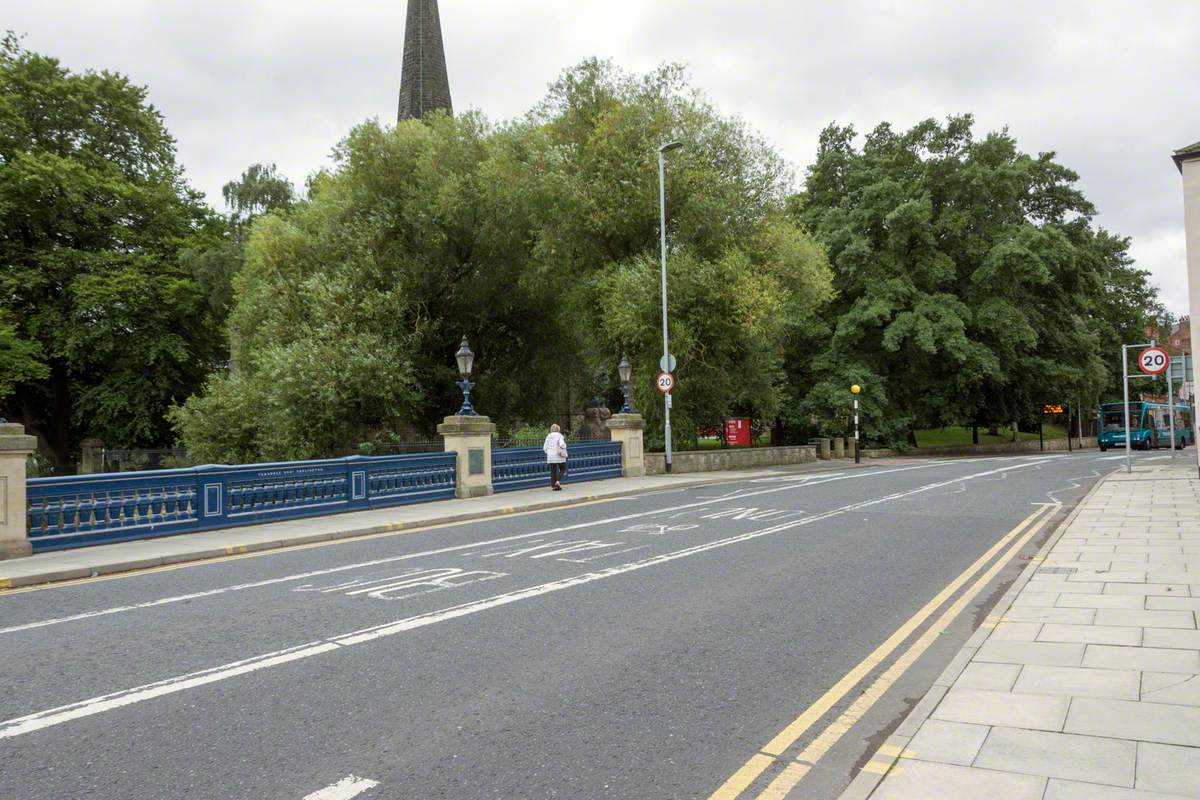How you can use this image
This image is available to be shared and re-used under the terms of the Creative Commons Attribution-NonCommercial licence (CC BY-NC).
This image can be reproduced in any way apart from any commercial uses.
Wherever you reproduce the image or an altered version of it, you must attribute the original creators (acknowledge the original artist(s), the person/organisation that took the photograph of the work) and any other stated rights holders.
Review our guidance pages which explain how you can reuse images, how to credit an image and how to find more images in the public domain or with a Creative Commons licence available.
DownloadNotes
Add or edit a note on this artwork that only you can see. You can find notes again by going to the ‘Notes’ section of your account.
A soldier is shown with bayonet rifle in both hands, as though to charge the enemy. The statue is streaked with blue metallic stains and the bayonet is missing. The idea of erecting a commemorative statue to the 88 Darlington men who had served in the War in South Africa was discussed shortly after the end of the conflict. Of those who saw action, eleven soldiers failed to return home in 1902. The memorial fund was soon set up and received £500 from over 5,000 subscribers. After several delays and to the disapproval of the town's pacifist Quakers, work began on its construction. The same year, Darlington's Mayor, W. E. Pease, happened to cross paths with Lord Roberts, the celebrated war hero of wars in Afghanistan, India and South Africa, whilst on a bridge over the Zambesi River.
The memorial, built by the Leeds Slate and Granite Company and executed by a now unknown Italian sculptor, was unveiled in a civic ceremony. Though the inauguration was well-attended, 70 of the town's Quakers effectively boycotted the event by attending a Peace Association meeting arranged at the Friends' Meeting House for the same time. They objected to the overtly aggressive representation of a soldier 'ready to thrust his bayonet through the enemy’. Ironically the same image was later used by the makers of 'Ye Old Boys Scotch' to sell their whiskey. In the 1950s the bayonet was accidentally broken off by children who had thrown a rope around it for use as a swing. It was not replaced.
Title
South African War Memorial
Date
1905
Medium
bronze, Peterhead granite & stone
Measurements
H 180 x W (?) x D (?) cm (E);
Plinth: H 215 x W 180 x D 180 cm
Accession number
DL1_HJC_S013
Acquisition method
purchased by public subscription
Work type
War memorial
Owner
Darlington Borough Council
Custodian
Darlington Borough Council
Work status
extant
Listing status
Grade II (England and Wales)
Unveiling date
5th August 1905
Listing date
06/09/77
Access
at all times
Inscription description
incised on irregular-shaped brass plaque on north face of pedestal: THIS MEMORIAL / WAS ERECTED BY 5576 / SUBSCRIBERS AS A TRIBUTE TO / THE MEMORY OF THE BRAVE MEN / OF DARLINGTON WHO VOLUNTEERED AND SERVED / THE EMPIRE IN THE SOUTH AFRICAN WAR / 1899-1902. / KILLED IN ACTION; (names below); DIED OF WOUNDS OR SICKNESS; (names below); incised on each of the three other brass plaques are the names of those who served in the war.
